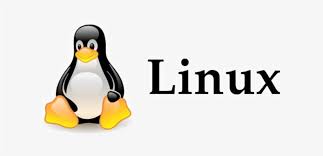Imagine a vast landscape of digital possibilities where the choices seem endless, each offering a unique path to navigate the realm of operating systems. Linux distributions, with their diverse array of flavors and functionalities, can be likened to a bountiful buffet awaiting your selection.
From the historical roots to the modern-day evolution, understanding the intricacies of Linux can lead you to a world of efficient computing tailored to your needs. Explore the realm of Linux distributions and embark on a journey towards optimizing your digital experience.
What Are Linux Distributions?
Linux distributions, also known as distros, are different versions of the Linux operating system that package together the Linux kernel with software applications and libraries. When you choose a Linux distribution, you’re selecting a specific set of software tools and user interfaces that have been curated and configured by the distribution maintainers. Each distribution has its own unique characteristics and target audience, so it’s essential to pick one that aligns with your needs and preferences.
One of the key advantages of Linux distributions is the flexibility they offer. You can easily customize your operating system by selecting different distributions tailored to specific purposes, such as gaming, multimedia production, or server management. Additionally, Linux distributions are known for their robust security features and stable performance, making them a popular choice for both personal and professional use.
History and Evolution of Linux
Throughout the years, the development and growth of the Linux operating system have been influenced by a series of significant milestones and contributions. In 1991, Linus Torvalds created the Linux kernel while studying at the University of Helsinki. This kernel formed the foundation of what would become the Linux operating system.
The open-source nature of Linux allowed developers worldwide to contribute to its improvement and customization, leading to rapid evolution. The release of the General Public License (GPL) in 1992 further solidified Linux’s commitment to open-source principles, ensuring that the code would always remain freely available for anyone to use, modify, and distribute.
Over time, major distributions like Debian, Red Hat, and Ubuntu emerged, each catering to specific user needs and preferences. The collaboration between developers, the open-source community, and corporations has been instrumental in shaping Linux into the versatile and powerful operating system that it’s today.
Key Features of Linux Distros
The evolution of Linux has led to various distributions, each offering distinct key features that cater to different user requirements. One of the key features of Linux distros is customization. Users have the freedom to tailor their operating system to suit their specific needs by choosing different desktop environments, software packages, and system configurations.
Another important feature is stability. Linux distributions are known for their reliability and robustness, making them ideal for servers and mission-critical systems. Security is also a major focus in Linux distros, with frequent updates and a strong community support system to address vulnerabilities promptly.
Additionally, Linux distros are renowned for their performance efficiency, often running smoothly on older hardware or resource-constrained devices. Many distributions also prioritize open-source software, promoting transparency and user freedom.
Popular Linux Distributions
Among the diverse array of operating systems available today, a selection of prominent distributions stands out as favorites among users for their unique characteristics and functionalities.
Ubuntu, known for its user-friendly interface and extensive software library, is a preferred choice for beginners and experienced users alike.
Fedora, maintained by the community and sponsored by Red Hat, focuses on innovation and the latest technologies.
Debian, a robust and stable distribution, is favored for its reliability and security features.
For those seeking a lightweight option, Xubuntu, with its XFCE desktop environment, offers a fast and efficient user experience.
CentOS, derived from Red Hat Enterprise Linux, is a popular choice for servers due to its long-term support and enterprise-level stability.
Arch Linux, known for its simplicity and customizability, appeals to users looking to tailor their system to specific needs.
These popular distributions cater to a wide range of users, each offering a unique set of features and benefits.
Choosing the Right Linux Distro
When selecting the ideal Linux distribution for your needs, consider factors such as your level of experience and the specific functionalities you require. If you’re new to Linux, user-friendly distributions like Ubuntu or Linux Mint might be a good starting point. These distributions offer intuitive interfaces and extensive documentation to help beginners get acquainted with the system. On the other hand, if you have more experience with Linux and want more customization options, distributions like Arch Linux or Gentoo might be more suitable.
Another crucial aspect to consider is the purpose for which you’ll be using the Linux distro. For instance, if you’re interested in cybersecurity, Kali Linux provides a range of pre-installed tools for penetration testing and digital forensics. Conversely, if you’re looking for a stable operating system for servers, CentOS or Debian could be better choices due to their long-term support and reliability.
Ultimately, the right Linux distribution for you’ll depend on your unique requirements and preferences. Take the time to research different options and test a few distributions to find the one that best fits your needs.
Conclusion
In conclusion, Linux distributions offer a wide range of choices for users based on their needs and preferences. Whether you’re a beginner or an advanced user, there’s a Linux distro that suits you.
With its open-source nature, robust security features, and customizable options, Linux continues to be a popular choice for operating systems.
So, go ahead and explore the world of Linux distributions to find the one that best fits your requirements.
